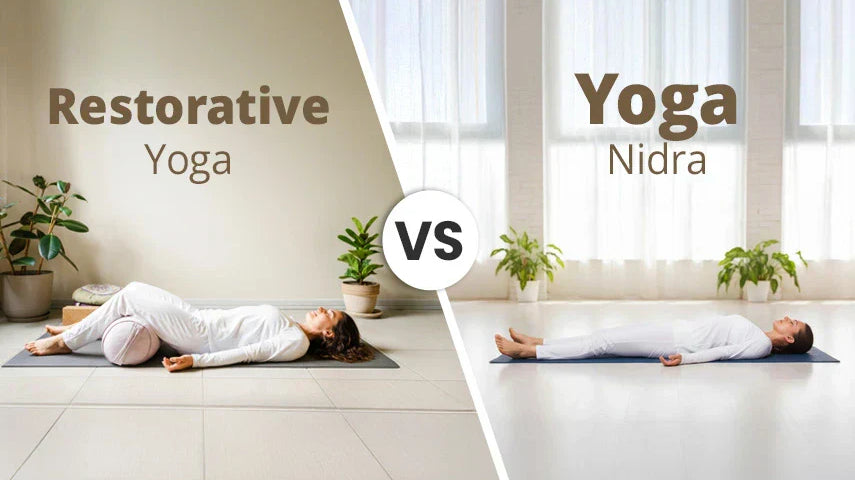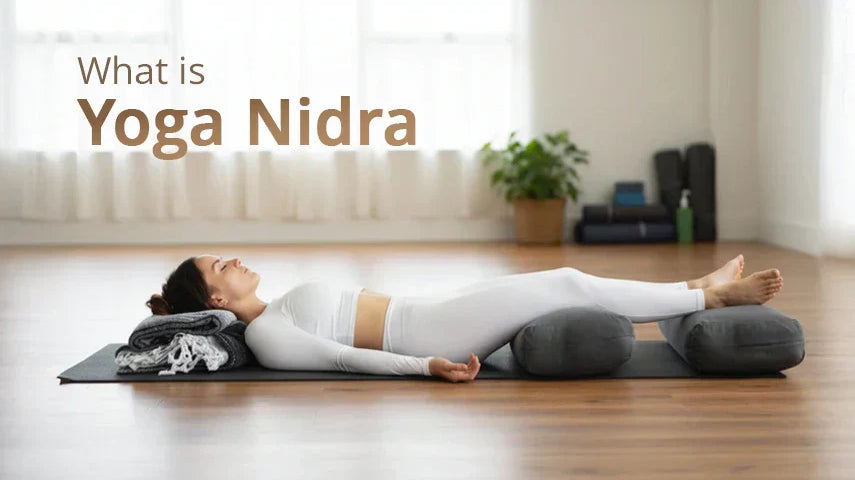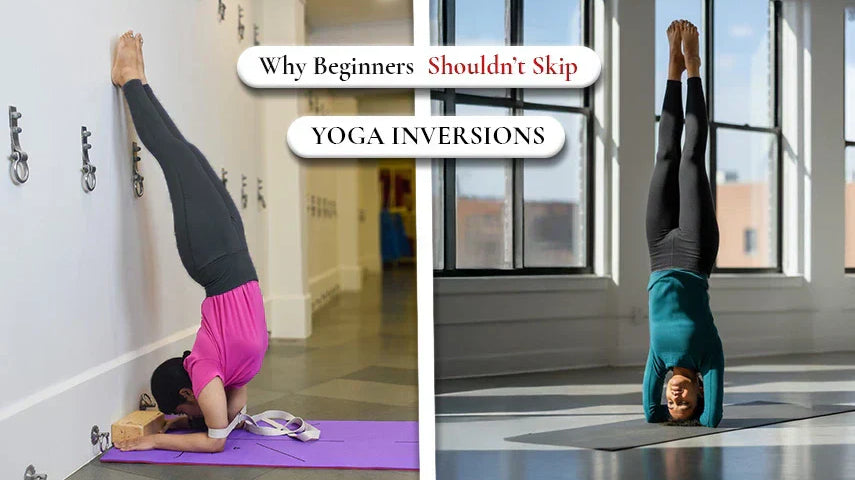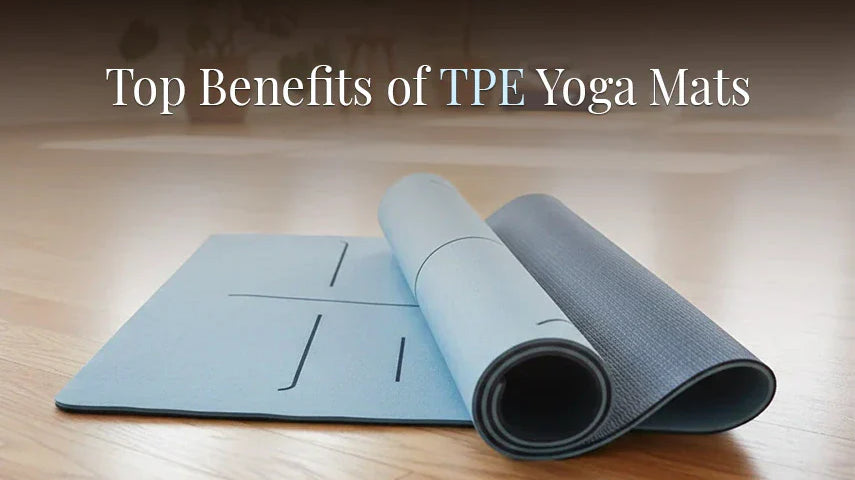
Table of Contents
Welcome, fellow yogis! As you join on your journey towards greater flexibility, strength, and mindfulness, the foundation of your practice lies in a vital piece of equipment your yoga mat. But with a vast array of options, choosing the right one can feel like navigating a labyrinth. Fear not! This comprehensive guide will be your compass, demystifying the different types of yoga mats, yoga mat material, their unique features, and who each mat might best suit.
Introduction to Yoga Mats
What is a yoga mat? It's a specially designed cushioned surface that provides stability, grip, and comfort during yoga practice. It protects your joints from hard floors, absorbs impact, and helps you maintain proper pose alignment.
Understanding the Importance of Your Yoga Mat
Think of your yoga mat as an extension of your practice space. It provides a stable, supportive, and grippy surface that enhances your experience in several ways:
- Stability and Grip: A good mat prevents slipping and wobbling, especially during challenging balancing poses, allowing you to focus on holding the posture with proper form.
- Cushioning and Support: Adequate cushioning protects your joints, particularly your knees, wrists, and lower back, during floor-based exercises. This is crucial for minimizing discomfort and preventing injuries.
- Alignment: A stable and supportive mat helps you maintain proper body alignment in poses, ensuring optimal engagement of target muscles and reducing the risk of strain or injury.
- Comfort: A comfortable mat encourages longer practice sessions and minimizes discomfort, especially during kneeling or seated postures. This allows you to fully immerse yourself in your practice without distractions.
Types of Yoga Mats
Now, let's delve into the diverse world of yoga mats! Here's a breakdown of the most common types, their unique characteristics, and who might benefit most from them:
1. PVC (Polyvinyl Chloride) Yoga Mats

PVC is a common and affordable synthetic material. These mats are typically lightweight, easy to clean, and offer decent grip.
- Benefits: Affordable, lightweight, durable, easy to clean.
- Drawbacks: Can be slippery when wet, may have a strong odour initially, not as eco-friendly as other options.
- Ideal For: Beginners on a budget, occasional yoga practitioners.
2. TPE (Thermoplastic Elastomer) Yoga Mats

TPE yoga mat is a newer, eco-friendly alternative to PVC. It offers similar grip and cushioning but is often lauded for being more comfortable and biodegradable.
- Benefits: Eco-friendly, comfortable, good grip, lightweight, often contains no harsh chemicals.
- Drawbacks: Can be slightly more expensive than PVC, and may not be as durable as some other options.
- Ideal For: Eco-conscious yogis, those seeking a comfortable and grippy mat.
3. Natural Rubber Yoga Mats

Natural rubber yoga mats provide excellent grip and cushioning, making them ideal for sweaty practices or those with joint concerns. However, they may not be suitable for latex allergies.
- Benefits: Excellent grip, very comfortable, naturally biodegradable, good for sweaty practices.
- Drawbacks: More expensive than PVC or TPE, may have a strong natural rubber odour initially, not ideal for latex allergies.
- Ideal For: Yogis with joint pain, those who prioritize comfort and grip, and practitioners who do hot yoga or Vinyasa flow.
4. PU (Polyurethane) Yoga Mats

PU yoga mats come in two varieties: top-coated PU (more affordable) and eco-PU (more eco-friendly). They offer a luxurious feel and good grip, but some may find them too soft.
- Benefits: Luxurious feel, good grip (especially top-coated PU), often water-resistant, some varieties are eco-friendly.
- Drawbacks: Can be expensive, some varieties may be slippery when wet, top-coated PU may not be biodegradable.
- Ideal For: Yogis who prioritize a luxurious feel, practitioners of gentle yoga styles.
5. Cork Yoga Mats

Cork yoga mats are natural, eco-friendly options that offer excellent grip and a unique, textured surface. However, it may be thinner and less cushioned than other types.
- Benefits: Eco-Friendly yoga mat, naturally antimicrobial (cork), very grippy, lightweight, some consider it aesthetically pleasing.
- Drawbacks: Thinner and less cushioned than some mats.
- Ideal For: Eco-conscious yogis who prioritize grip and a natural feel, practitioners of gentle yoga styles.
6. Travel Yoga Mats

Travel yoga mats are ultra-thin and lightweight, making them perfect for yogis on the go. They typically offer less cushioning than standard mats.
- Benefits: Ultra-portable, lightweight, easy to store and transport.
- Drawbacks: Thin and not very cushioned, may not be suitable for all yoga styles or those with joint pain.
- Ideal For: Traveling yogis, those who need a portable mat for occasional use, and practitioners who complement their studio practice with home yoga sessions on a cushioned floor.
7. Sticky Yoga Mats

Sticky yoga mats, often made of polyurethane (PU), are known for their exceptional grip, even when wet. This makes them ideal for sweaty practices like hot yoga or Vinyasa flows.
- Benefits: Excellent grip even when wet, ideal for hot yoga or sweaty practices.
- Drawbacks: Can be more expensive, some may find them too sticky, may not be as durable as other options.
- Ideal For: Yogis who practice hot yoga or Vinyasa flows, those who prioritize excellent grip.
8. Printed Yoga Mats

Printed yoga mats add a touch of personality and visual interest to your practice. They come in various colours, patterns, and even alignment guides for beginners. The material used for printed mats can vary, so consider the same factors as with other types.
- Benefits: Adds a fun and personal touch to your practice, some may find alignment guides helpful.
- Drawbacks: Functionality may be compromised depending on the material used, may be more expensive than plain mats.
- Ideal For: Yogis who want to personalize their practice space, beginners who can benefit from alignment guides.
9. Wool Yoga Mats

Wool yoga mats offer a luxurious and naturally antimicrobial surface. They are known for their excellent heat regulation, keeping you warm in cooler environments and wicking away moisture during sweaty practices. However, they may require special care and cleaning.
- Benefits: Luxurious feel, naturally antimicrobial, excellent heat regulation (warm in cool environments, wicks away moisture during hot practices), naturally fire-resistant.
- Drawbacks: Requires special care and cleaning, may be more expensive than other options, not ideal for those with wool allergies.
- Ideal For: Yogis who prioritize a luxurious and comfortable feel, practitioners of Yin yoga or restorative yoga (due to warmth), those seeking natural and antimicrobial properties.
10. Cotton Yoga Mats

Cotton yoga mats are a natural and eco-friendly option. They offer a breathable and absorbent surface, making them suitable for gentle yoga styles. However, they may not provide as much cushioning or grip as other materials.
- Benefits: Natural, eco-friendly, breathable, absorbent, sustainable yoga mat.
- Drawbacks: May not be as cushioned or grippy as other options, can be prone to absorbing sweat and odours, and may require frequent washing.
- Ideal For: Eco-conscious yogis who prioritize a natural feel, practitioners of gentle yoga styles like Hatha or Yin yoga (where grip is less crucial).
Conclusion: Finding Your Perfect Match - A Journey, Not a Destination
Choosing the right yoga mat is an investment in your well-being and a commitment to your yoga journey. There's no single "best" mat the ideal choice depends on your individual needs and preferences. Consider your yoga style, budget, and desired level of comfort, grip, and cushioning. This guide has provided a roadmap, equipping you to navigate the diverse world of yoga mats. Remember, your perfect mat awaits one that complements your practice and empowers you to reach your yoga goals. So, unroll your mat, take a deep breath, and step onto a foundation that supports your journey towards a healthier, happier you.









